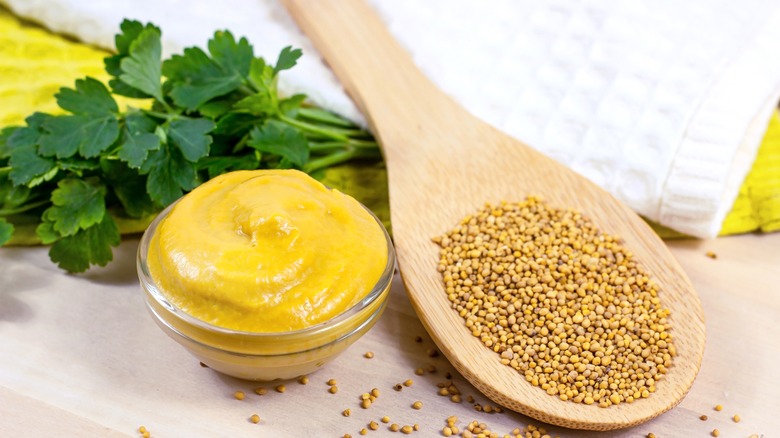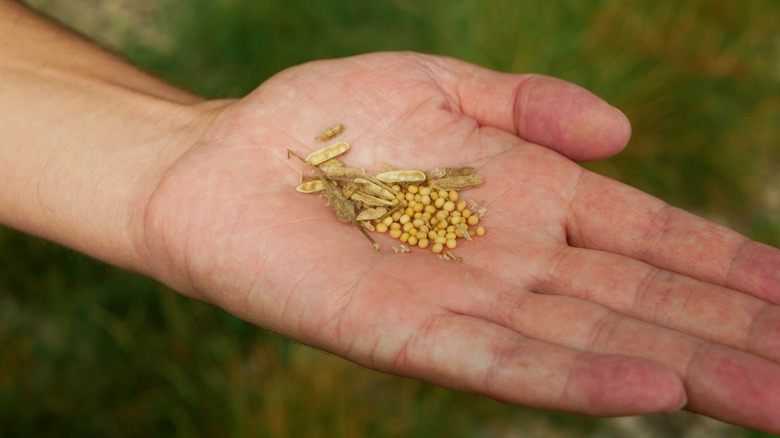Where Most Of Your Mustard Is Actually From
Drizzled on a bratwurst, mustard feels unimpeachably German. Squeezed from a bright yellow bottle at a ballpark, it's American. Passed between two Rolls-Royces — like in the classic Grey Poupon TV ad — it's distinctly French.
The condiment, which is made by soaking mustard seeds in either water or a sour liquid like vinegar, dates back thousands of years. It's mentioned in ancient Sumerian texts and was used medicinally by ancient Greek physicians. And today, there are dozens of types of mustard that each have strong cultural connections.
But not all mustard is as it seems. Even Grey Poupon, the iconic Dijon mustard brand Ina Garten swears by, isn't produced in France; for American consumers, it's made in Holland, Michigan.
The U.S. grows a lot of mustard — 81.1 million pounds in 2020, according to the Agricultural Marketing Resource Center – but that's a small fraction of the world's total production. In fact, most of our mustard comes from countries that may seem unlikely: Nepal, Russia, and Canada.
How broccoli helps explain where mustard really comes from
Many common spices grow best in warm areas. The tropics of India and Vietnam give us black pepper, for example, and cumin is native to the Middle East. But not mustard: Mustard seeds grow best in temperate climates, where the weather is a little cooler.
This is why about 40% of the world's mustard comes from Nepal, in the mid-altitude areas between tropical valleys and arctic Himalayan peaks. Russia and Canada, both infamously chilly places, are also big growers. In the U.S., the top mustard-growing states are all near the northern border: Idaho, Montana, North Dakota, Washington, and Oregon.
It's not just mustard that likes the cold — it's mustard's whole family. Mustard is a member of the Brassicaceae family, which also includes most of the world's most important vegetable crops, such as broccoli, cabbage, arugula, and turnips. These crops thrive in cool temps and taste best when grown during the sunny days and brisk nights of autumn.
While our beloved yellow condiment is made from mustard seeds, planting the seeds yields a culinary contribution that makes the connection to cousins like collard greens much more obvious. If you haven't tried the mustard greens that grow above ground, you should start eating them. They're rich in vitamins K and C and full of antioxidants that can boost immunity. And with Martha Stewart's thrifty vinaigrette hack, you can make a delicious mustard dressing for a mustard green salad!

